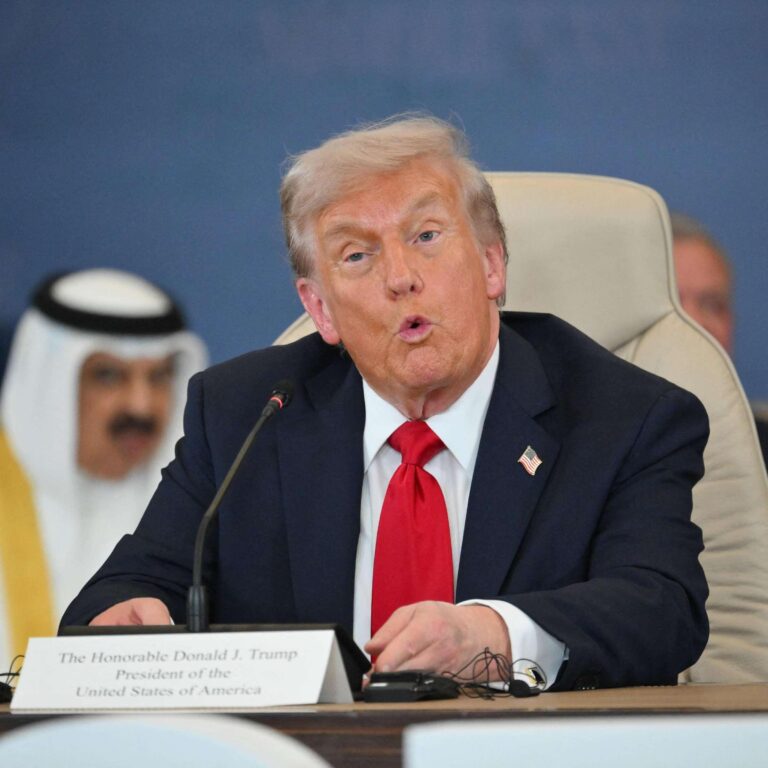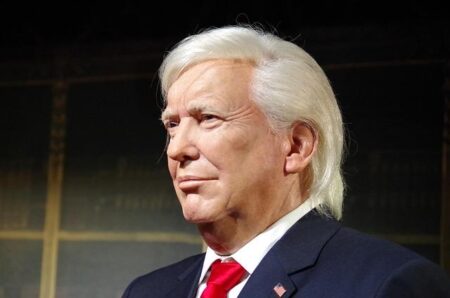Former President Donald Trump has stirred debate by suggesting he might provide Ukraine with Tomahawk cruise missiles amid the ongoing conflict with Russia. As discussions intensify over Western military support to Kyiv, Trump’s remarks have raised questions about the seriousness and implications of such a move. This article examines the context of Trump’s statement, reactions from policymakers, and the broader strategic considerations surrounding advanced arms deliveries to Ukraine.
Trump Signals Potential Tomahawk Missile Support for Ukraine Amid Ongoing Conflict
Former President Donald Trump recently hinted at the possibility of supplying Ukraine with Tomahawk missiles, a move that would mark a significant escalation in U.S. military aid amid the ongoing conflict. While his remarks stirred intense speculation, analysts remain cautious about whether this is a concrete policy shift or a strategic bluff aimed at influencing diplomatic leverage. Supporters argue that providing advanced missile systems could significantly bolster Ukraine’s defensive and offensive capabilities, potentially altering the dynamics on the battlefield.
Key considerations surrounding this development include:
- Political implications: The potential decision raises questions about bipartisan support and the administration’s risk tolerance in escalating involvement.
- Military impact: Tomahawks offer precision strike capabilities over long distances, drastically increasing Ukraine’s tactical options.
- Diplomatic consequences: Such a move could trigger strong responses from Russia, affecting ongoing peace negotiations and regional stability.
| Aspect | Potential Impact |
|---|---|
| U.S. Military Aid | Augmentation with long-range missile systems |
| Russian Response | Heightened diplomatic tensions and possible retaliatory measures |
| Global Security | Shift in power dynamics influencing NATO strategies |
Analyzing the Strategic Implications and Credibility of Trumps Announcement
Donald Trump’s announcement regarding a possible transfer of Tomahawk missiles to Ukraine introduces a complex layer of strategic signaling, both internationally and domestically. On one hand, such a move could represent a significant escalation in U.S. involvement, potentially altering the dynamics of the ongoing conflict by enhancing Ukraine’s long-range strike capabilities. This proposal, however, arrives without clear confirmation or detailed planning, raising questions about its feasibility and timing. Analysts point out that providing Tomahawks-long-range, precision-guided cruise missiles-could serve as leverage in diplomatic talks, aiming to pressure both Russia and NATO allies while testing the political resolve of President Biden’s administration.
The credibility of Trump’s announcement is under scrutiny. Observers highlight several factors that contribute to skepticism:
- Lack of official endorsement: No formal statement from the Pentagon or State Department has corroborated the claim.
- Political motives: As an outspoken critic of current U.S. foreign policy, Trump may be leveraging this declaration to reassert influence over military affairs ahead of potential elections.
- Technical and logistical hurdles: Delivering and integrating Tomahawks into Ukraine’s arsenal would require extensive support infrastructure, raising doubts about immediate implementation.
| Factor | Implication | Credibility Level |
|---|---|---|
| Military Readiness | Requires U.S. authorization and training support | Moderate |
| Political Motivation | May serve electoral rhetoric purposes | High |
| International Response | Could provoke Russia and NATO reactions | Uncertain |
Experts Weigh In on Risks and Recommendations for US Policy Toward Ukraine
Experts caution that the prospect of supplying Tomahawk cruise missiles to Ukraine introduces a complex array of strategic and diplomatic risks. Military analysts emphasize that while such support could significantly enhance Ukraine’s defensive capabilities, it also risks escalating the conflict by provoking a severe response from Russia. “Providing long-range, precision-guided missiles crosses a red line that could widen the war and draw NATO deeper into the confrontation,” notes a senior defense policy advisor. Additionally, intelligence specialists warn that the transfer could compromise sensitive technologies, potentially ending up in hostile hands or altering the balance of power in unpredictable ways.
Policy recommendations from leading voices in Washington include:
- Enhancing intelligence and surveillance support rather than direct offensive weaponry
- Prioritizing diplomatic channels alongside calibrated military aid
- Implementing strict end-use monitoring to prevent misuse or escalation
| Risk | Potential Impact |
|---|---|
| Escalation of Conflict | Broader regional war |
| Technological Spillover | Loss of strategic advantage |
| Diplomatic Fallout | Strained NATO-Russia relations |
Final Thoughts
As the debate over U.S. military support for Ukraine continues to unfold, former President Donald Trump’s remarks about potentially supplying Tomahawk missiles add another layer of complexity to an already charged discussion. Whether his statements signal a genuine shift in policy or a strategic bluff remains uncertain. What is clear, however, is that any decision to provide advanced weaponry like Tomahawks will carry significant geopolitical implications, underscoring the high stakes involved in the ongoing conflict. The coming weeks will reveal whether this announcement marks a turning point or simply another chapter in the evolving narrative surrounding U.S. aid to Ukraine.




